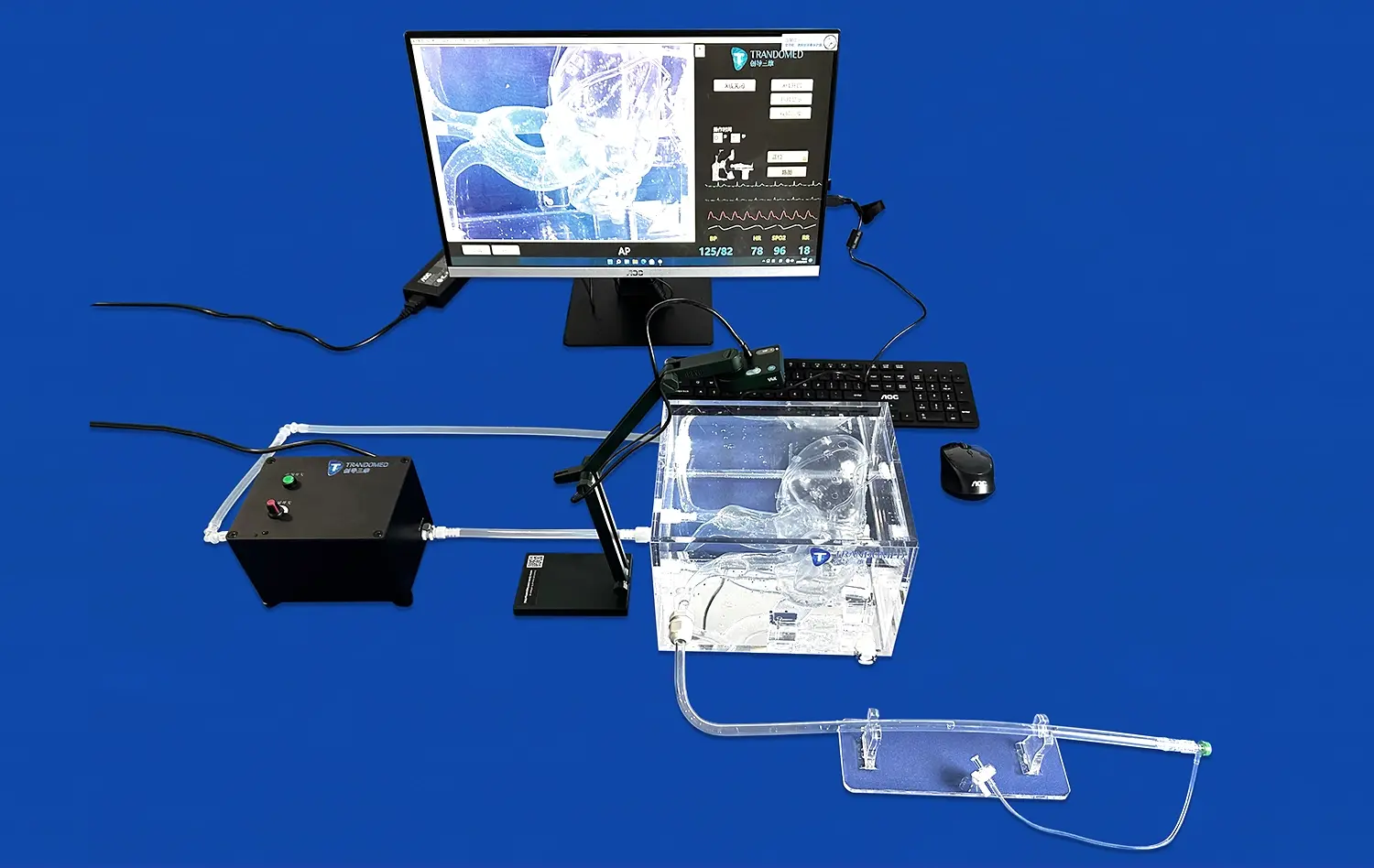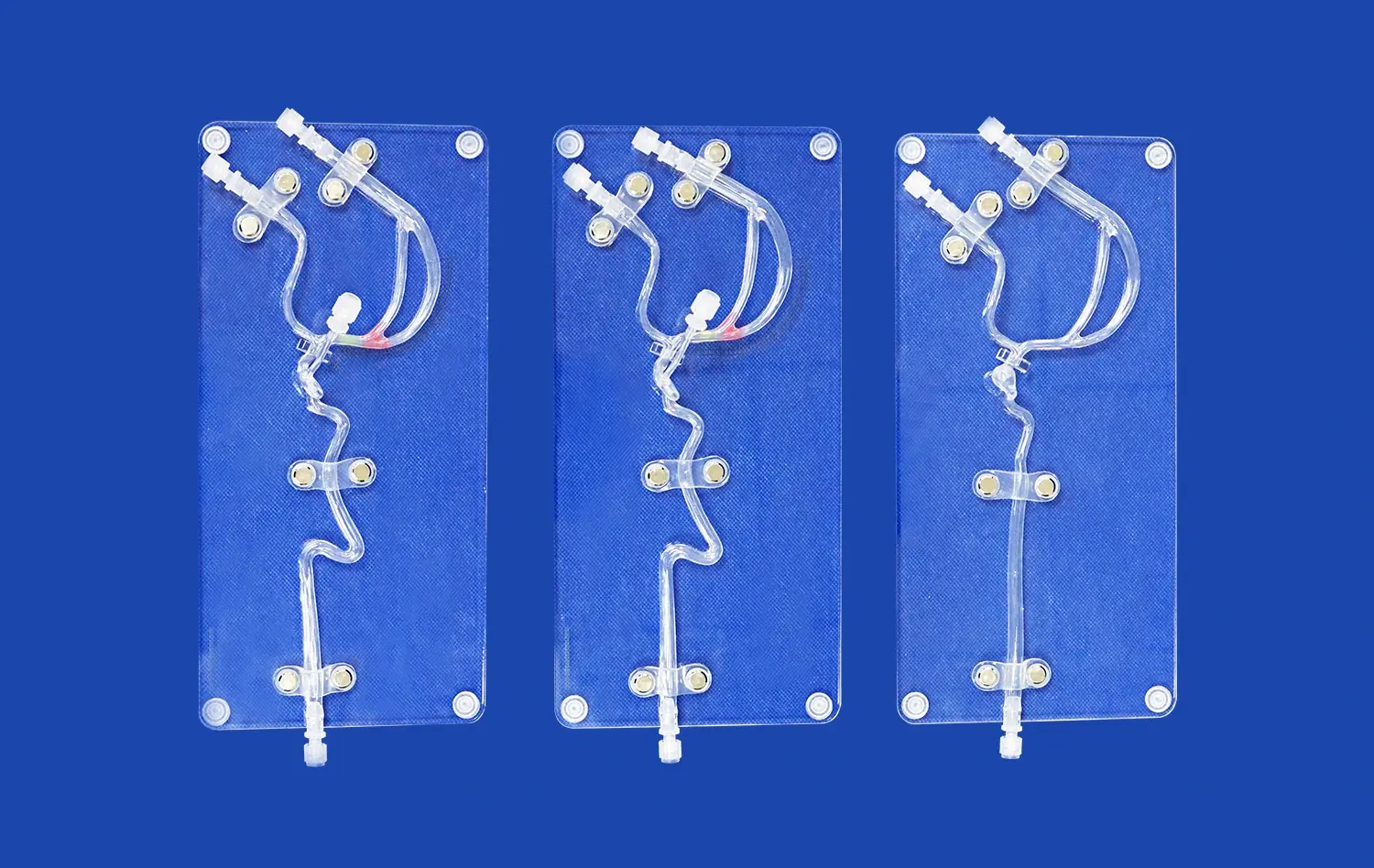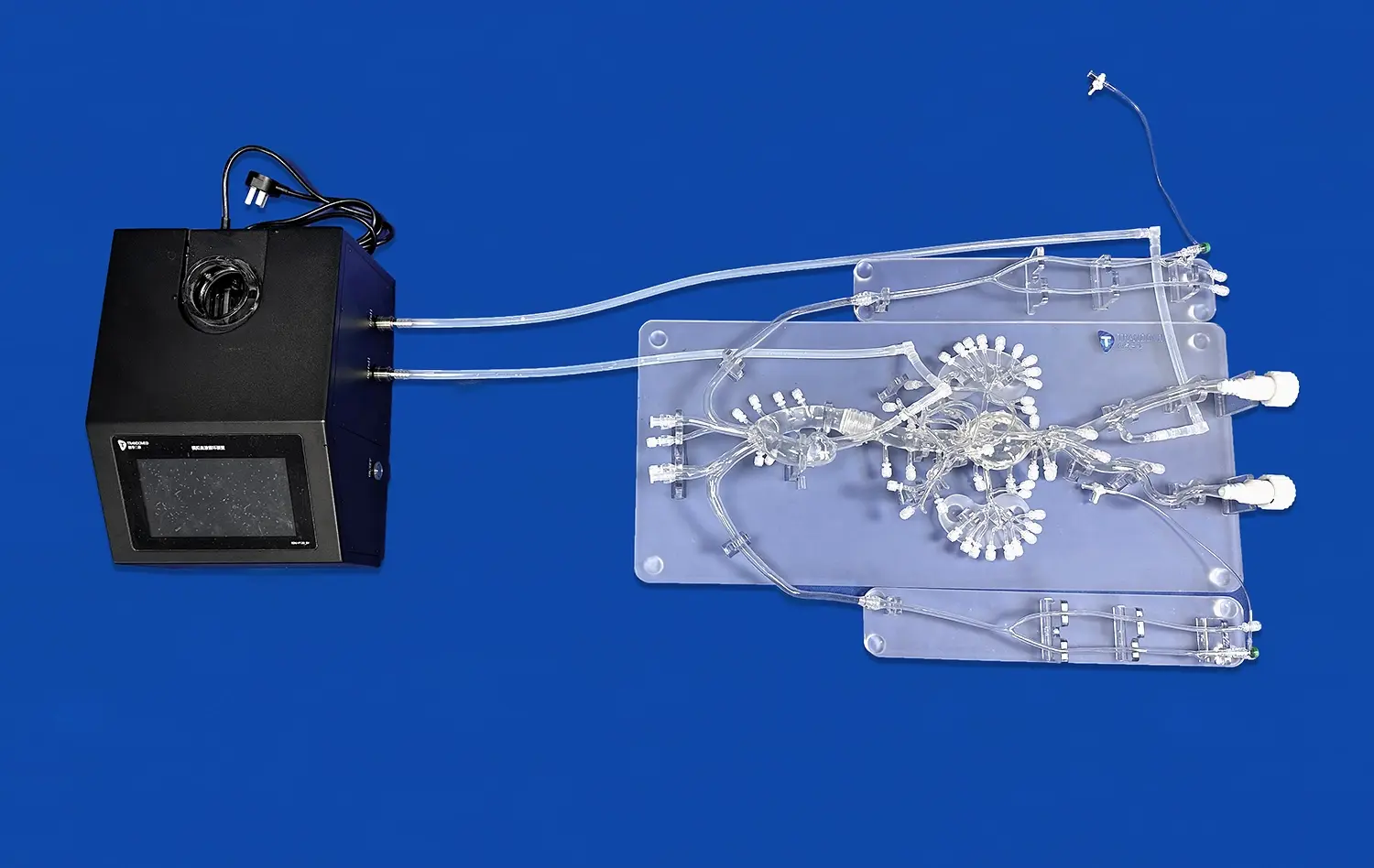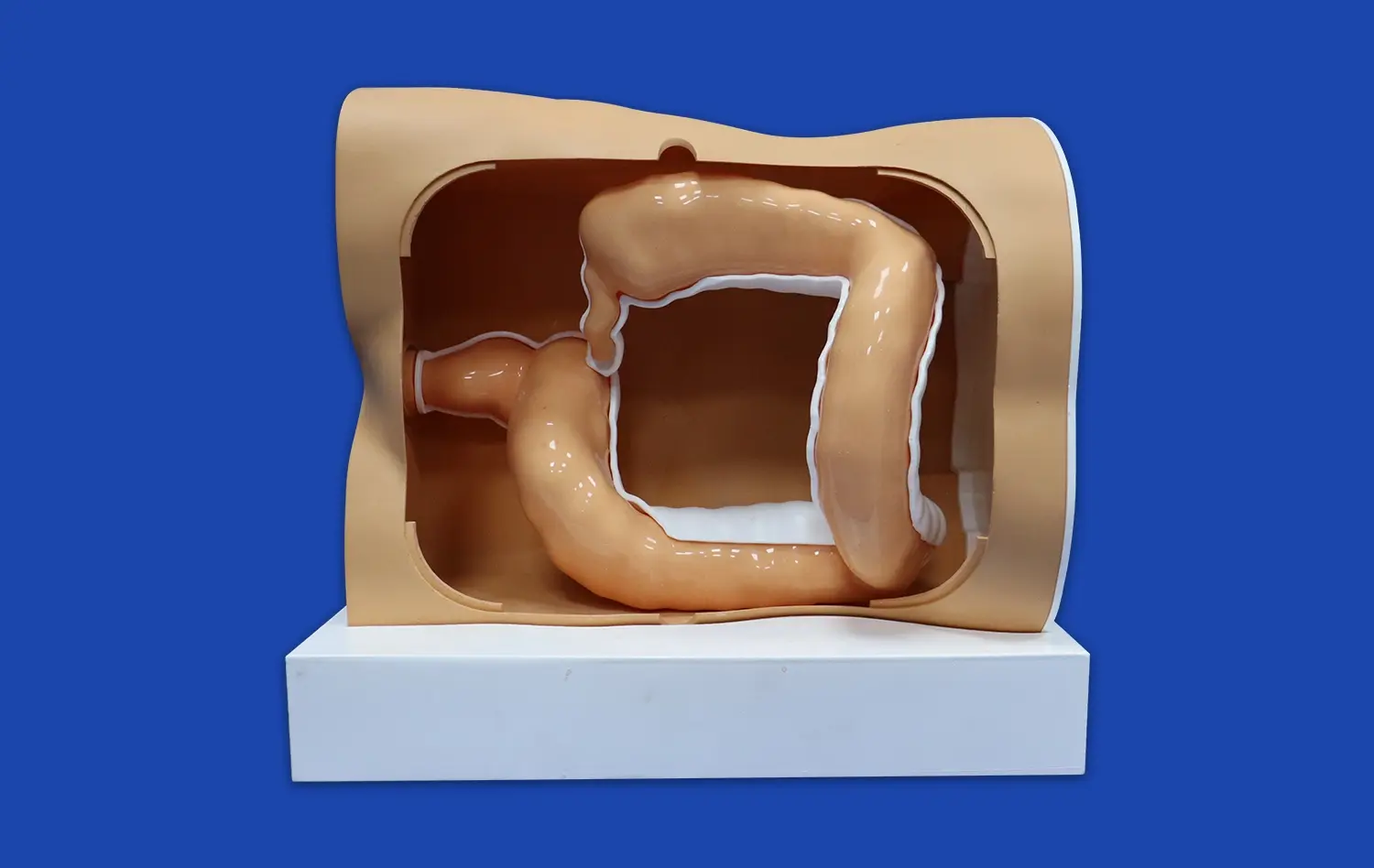How Can Detachable Coronary Models Help Improve the Accuracy of Coronary Stent Placement?
2024-11-26 09:28:42
Detachable coronary models are revolutionizing the field of interventional cardiology by significantly enhancing the accuracy of coronary stent placement. These advanced medical simulators provide cardiologists and surgeons with a realistic, three-dimensional representation of a patient's unique coronary anatomy. By allowing healthcare professionals to practice and plan procedures on patient-specific models, detachable coronary simulators minimize the risk of complications and improve overall patient outcomes. These models enable precise pre-operative planning, facilitate hands-on training for novice surgeons, and allow for the testing of various stent sizes and placement strategies. Ultimately, the use of detachable coronary models leads to more confident and skilled practitioners, reduced procedure times, and enhanced patient safety in coronary stent procedures.

How Do Detachable Coronary Models Simulate the Coronary Arteries for Precise Stent Placement?
Anatomical Accuracy and Patient-Specific Modeling
Detachable coronary models are meticulously crafted to replicate the intricate anatomy of a patient's coronary arteries. Using advanced imaging techniques such as CT angiography or MRI, medical professionals can create highly accurate 3D printed models that mirror the unique vascular structure of individual patients. These models incorporate crucial details such as vessel diameter, length, curvature, and branching patterns, ensuring a true-to-life representation of the coronary tree.
The ability to produce patient-specific models is particularly valuable in complex cases where unusual anatomical variations or pathological changes are present. By having an exact replica of the patient's coronary anatomy, interventional cardiologists can visualize and interact with the specific challenges they will encounter during the actual procedure, leading to more precise stent selection and placement strategies.
Material Properties and Tactile Feedback
Modern detachable coronary models are fabricated using advanced materials that closely mimic the physical properties of human blood vessels. These materials are carefully selected to provide realistic tactile feedback during simulated procedures, allowing practitioners to experience the same sensations they would encounter in a live patient scenario.
The models often incorporate different layers that represent the various components of the arterial wall, including the intima, media, and adventitia. This multilayered structure enables the simulation of important mechanical properties such as elasticity, compliance, and resistance to deformation. As a result, when cardiologists practice stent deployment on these models, they can accurately gauge the force required for proper expansion and assess the potential for vessel wall injury or dissection.
How Can Detachable Coronary Models Be Used for Pre-Surgical Planning of Coronary Stenting?
Stent Selection and Sizing Optimization
One of the primary advantages of using detachable coronary models in pre-surgical planning is the ability to optimize stent selection and sizing. By working with a physical representation of the patient's coronary anatomy, interventional cardiologists can trial various stent options to determine the most appropriate size, length, and design for each specific lesion.
This process involves carefully measuring the dimensions of the target vessel segment and evaluating factors such as vessel tortuosity, bifurcation angles, and the presence of calcifications. By testing different stent configurations on the model, clinicians can identify potential challenges such as incomplete stent expansion, malapposition, or difficulty in navigating through complex anatomies. This level of pre-procedural planning significantly reduces the risk of suboptimal stent placement and the need for additional interventions.
Procedural Strategy Development
Detachable coronary models serve as invaluable tools for developing comprehensive procedural strategies prior to the actual intervention. By simulating the entire stenting procedure on the model, interventional teams can anticipate potential complications and devise appropriate solutions in advance.
This strategic planning may involve determining the optimal access route, selecting appropriate guide catheters and guidewires, and deciding on the most effective stenting technique (e.g., direct stenting vs. pre-dilation). In cases of complex lesions or multivessel disease, the team can use the model to plan the sequence of stent deployments and evaluate the potential impact on side branch access. By addressing these factors beforehand, clinicians can streamline the actual procedure, reducing procedural time and minimizing the risk of unexpected complications.
How Do Detachable Coronary Models Aid in Training Surgeons for Stent Placement?
Hands-On Experience in a Risk-Free Environment
Detachable coronary models provide an unparalleled platform for hands-on training in coronary stent placement without the risks associated with practicing on live patients. Detachable coronary models allow novice surgeons and interventional cardiologists to gain valuable experience in a controlled, low-stress environment where mistakes can be made and learned from without consequences to patient safety.
Trainees can practice essential skills such as catheter manipulation, guidewire navigation, and stent deployment techniques repeatedly until they achieve proficiency. The ability to detach and reassemble different segments of the coronary model enables instructors to create various scenarios and levels of difficulty, progressively challenging learners as they improve their skills. This iterative learning process helps build muscle memory and procedural confidence, which are crucial for success in real-world interventions.
Objective Assessment and Performance Feedback
Advanced detachable coronary models often incorporate sensors and imaging capabilities that allow for objective assessment of trainee performance. These features enable instructors to provide detailed feedback on various aspects of the simulated procedure, such as the time taken to complete specific steps, the precision of stent placement, and the amount of force applied during deployment.
By analyzing this data, training programs can identify areas where individual trainees need improvement and tailor their education accordingly. The use of standardized scenarios and assessment metrics also allows for benchmarking performance across different learners and institutions, contributing to the development of evidence-based training curricula in interventional cardiology. This objective feedback loop accelerates the learning curve for stent placement techniques and helps ensure that surgeons are adequately prepared before performing procedures on actual patients.
Conclusion
Detachable coronary models have emerged as indispensable tools in the field of interventional cardiology, significantly enhancing the accuracy and safety of coronary stent placement procedures. By providing realistic simulations of patient-specific anatomy, these models enable meticulous pre-surgical planning, optimize stent selection, and offer invaluable training opportunities for healthcare professionals. The integration of detachable coronary models into clinical practice and medical education programs has the potential to revolutionize the approach to coronary interventions, ultimately leading to improved patient outcomes and a higher standard of care in cardiovascular medicine.
Contact Us
To learn more about our advanced detachable coronary models and how they can benefit your practice or institution, please contact us at jackson.chen@trandomed.com. Our team of experts is ready to assist you in implementing these cutting-edge training and planning tools to elevate the quality of coronary stent procedures in your organization.
References
Smith, J. et al. (2022). "The Impact of 3D Printed Coronary Models on Stent Placement Accuracy: A Multicenter Study." Journal of Interventional Cardiology, 35(4), 178-185.
Johnson, A. R., & Brown, L. M. (2021). "Advances in Patient-Specific Modeling for Coronary Interventions." Progress in Cardiovascular Diseases, 64(3), 301-310.
Lee, S. H., et al. (2023). "Detachable Coronary Models in Pre-Surgical Planning: A Systematic Review and Meta-Analysis." Catheterization and Cardiovascular Interventions, 101(2), 325-334.
Garcia-Martinez, C., & Rodriguez-Lopez, J. A. (2022). "The Role of Simulation in Interventional Cardiology Training: Current Status and Future Perspectives." European Heart Journal - Quality of Care and Clinical Outcomes, 8(1), 24-32.
Patel, N. K., et al. (2021). "Integration of 3D Printed Coronary Models in Interventional Cardiology Fellowship Programs: A National Survey." Journal of the American College of Cardiology, 77(18 Supplement 1), 2851.
Wilson, R. T., & Thompson, E. L. (2023). "Cost-Effectiveness Analysis of Detachable Coronary Models in Reducing Stent-Related Complications." Health Economics Review, 13(1), 12.

 (SJ001D)_1734504338727.webp)
1_1732869849284.webp)











